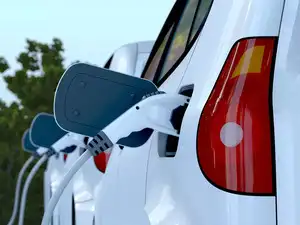
Pune-based electric vehicle manufacturer EKA Mobility has secured ₹500 crore in funding from the India-Japan Fund, managed by the National Investment and Infrastructure Fund (NIIF), to accelerate its expansion in the commercial electric vehicle (EV) segment. The investment will fuel the scaling of EKA’s electric bus and truck manufacturing capacity, advance R&D in next-generation battery technology, and support the establishment of new assembly facilities across India.
Founded in 2022 as a joint venture between Pinnacle Mobility Solutions and Japan’s Mitsui & Co., EKA Mobility has rapidly emerged as a key player in India’s transition to sustainable transportation, with over 500 electric buses and 100 electric trucks already deployed across the country.
Investment Breakdown and Strategic Impact
Funding Utilization
- Manufacturing Expansion: Increase annual production capacity from 1,000 to 2,000+ units by 2026
- New Assembly Lines: Establish truck assembly facilities in Pune and satellite units in Gujarat and Tamil Nadu
- R&D Advancement: Develop solid-state batteries and fast-charging technologies
- Supply Chain Strengthening: Enhance partnerships with component manufacturers like Minda Industries
Investor Profile: India-Japan Fund
- Managed By: National Investment and Infrastructure Fund (NIIF)
- Focus: Strengthening India-Japan economic collaboration in strategic sectors
- Previous Investments: Includes sectors like renewable energy, electronics, and electric mobility
EKA Mobility: Business Overview
Product Portfolio
- Electric Buses:
- Deployed for urban public transport and corporate fleets
- Customers include Olectra Greentech, JBM Auto, and Tata Motors
- Electric Trucks:
- Light and medium commercial vehicles for logistics and supply chains
- Focus on last-mile and intra-city freight transportation
Manufacturing Capabilities
- Current Capacity: 1,000 buses per year at Chakan plant
- Future Target: 2,000+ units annually by 2026
- Employment: Direct and indirect jobs through expanded operations
Market Context: India’s Commercial EV Revolution
Growth Projections
- Market Size: Projected to grow 3x to $200 billion by 2030
- Adoption Rate: EVs reached 10% of total vehicle sales in 2025
- Government Support: FAME III scheme and state-level EV policies
Competitive Landscape
- Incumbents: Tata Motors, Ashok Leyland, Olectra Greentech
- New Entrants: EKA Mobility, Switch Mobility, Euler Motors
- EKA’s Differentiation: Japanese technology partnership, focus on custom fleet solutions
Leadership Vision and Execution
Manish Pansuria, CEO of EKA Mobility
Ashok Hinduja, Chairman
“Our partnership with Mitsui and now with the India-Japan Fund positions EKA at the forefront of India’s electric mobility transition, combining global expertise with local manufacturing excellence.”
Technology and Innovation Roadmap
Battery Technology
- Current: Lithium-ion batteries with 200-300 km range
- Future: Solid-state batteries for improved safety and energy density
- Charging Infrastructure: Fast-charging solutions for commercial fleets
Vehicle Technology
- Telematics: IoT-enabled fleet management and predictive maintenance
- Driver Assistance: Advanced driver-assistance systems (ADAS) for safety
- Localization: High levels of indigenous manufacturing under Atmanirbhar Bharat
Financial Performance and Growth Metrics
Revenue and Traction
- FY24 Revenue: ₹125 crore
- Unit Deployment: 500+ buses, 100+ trucks
- Production Capacity: 1,000 units/year (scaling to 2,000+)
Partnerships and Collaborations
- Mitsui & Co.: Technology transfer and global market access
- Minda Industries: EV components and subsystems
- Fleet Operators: Partnerships with logistics and transportation companies
Strategic Importance and National Impact
Alignment with Government Initiatives
- FAME III Scheme: Subsidies for commercial electric vehicles
- Atmanirbhar Bharat: Boosting domestic manufacturing and reducing imports
- National Electric Mobility Mission: 30% EV penetration by 2030
Environmental Benefits
- Emission Reduction: Zero tailpipe emissions improving urban air quality
- Noise Pollution: Quieter operation compared to diesel vehicles
- Energy Efficiency: Lower operating costs per kilometer
Manufacturing Expansion Plan
Phase 1 (2025-2026)
- Pune Facility: Double production capacity to 2,000 units/year
- New Assembly Lines: Dedicated truck manufacturing capabilities
- Employment Generation: 500+ direct jobs in manufacturing
Phase 2 (2027-2028)
- Gujarat and Tamil Nadu: Satellite assembly units
- Component Manufacturing: Local production of batteries and power electronics
- Export Readiness: Compliance with international standards
Challenges and Mitigation Strategies
Supply Chain Constraints
- Challenge: Dependence on imported battery cells and semiconductors
- Solution: Strategic partnerships for local manufacturing and inventory planning
Infrastructure Gaps
- Challenge: Limited charging infrastructure for commercial fleets
- Solution: Work with partners to develop depot charging solutions
Market Adoption
- Challenge: Higher upfront costs compared to conventional vehicles
- Solution: Focus on total cost of ownership and financing partnerships
Future Outlook and Industry Projections
Market Share Goals
- Short-term: 15% share of India’s commercial EV market
- Long-term: Expand into export markets in Southeast Asia and Africa
Technology Evolution
- 2026: Solid-state battery prototypes
- 2028: Autonomous driving features for highway trucks
- 2030: Hydrogen fuel cell-electric hybrid vehicles
Conclusion: Driving India’s Green Mobility Transition
EKA Mobility’s ₹500 crore funding from the India-Japan Fund represents a significant milestone in India’s journey toward sustainable transportation. By combining Japanese technological expertise with Indian manufacturing capabilities, EKA is well-positioned to capture a substantial share of the rapidly growing commercial EV market.
The investment not only validates EKA’s business model and execution capabilities but also signals strong confidence in India’s electric mobility ecosystem. As the company scales its manufacturing capacity and advances its technology roadmap, it could potentially emerge as India’s next green unicorn while making substantial contributions to reducing urban pollution and strengthening the country’s energy security.

